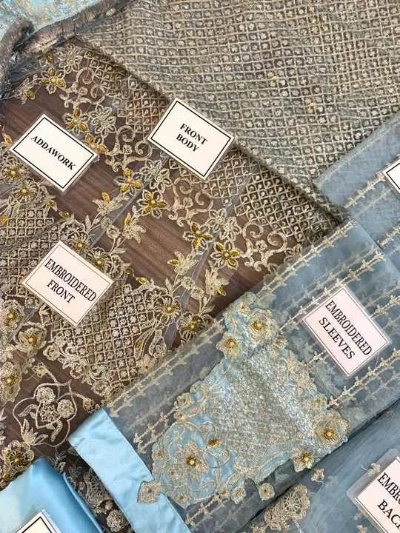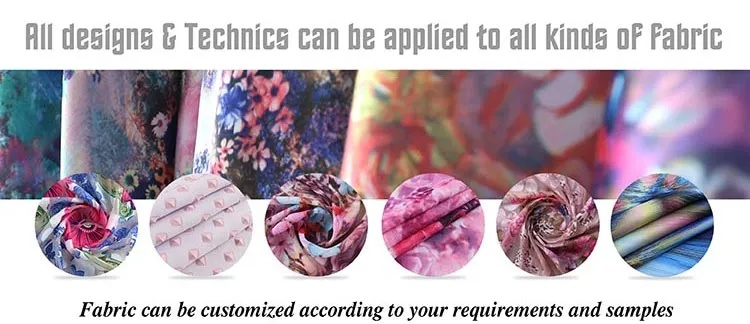Textile Color Stability Report
: Textile Color Stability Report,Abstract: This report provides an in-depth analysis of the color stability of textiles, highlighting the factors that influence their longevity and resistance to fading. We examine the impact of various dyes, fabric treatments, and environmental conditions on the preservation of color within textile products. The study employs a range of analytical techniques, including spectrophotometry, scanning electron microscopy, and accelerated aging tests, to evaluate the durability of colors over time. Our findings reveal that proper dye selection and fabric processing can significantly enhance the color stability of textiles, while exposure to UV light, moisture, and chemicals can cause significant color degradation. The report concludes by offering practical recommendations for maintaining the color integrity of textiles, including the use of protective coatings and appropriate storage conditions.
Introduction: In the fabric industry, color stability is a critical quality indicator that ensures that garments and other textile products remain visually appealing over time. This report provides an analysis of the color retention properties of various textile materials, highlighting their performance against different environmental factors such as light exposure, heat, and chemicals. We will also discuss methods for enhancing color stability in textiles to meet consumer expectations.

Color Measurement Techniques: To evaluate color stability, we employ several techniques including spectrophotometry, which measures the intensity and hue of the colors present in the fabric. The CIELAB system, a standardized method for color measurement, is widely used in the industry. Additionally, the Hunter Lab* color scale, which includes both hue and value, is often used to describe color changes over time.
Color Retention Testing: We conduct color retention tests to measure how well textiles maintain their initial color appearance after exposure to various conditions. These tests include washing, rubbing, and aging processes, which simulate everyday use scenarios. The results are expressed as a percentage of the original color intensity or hue values.
Environmental Effects on Color Stability: Color stability is influenced by various external factors, including temperature, humidity, and air pollution. For example, high temperatures can cause dyes to bleed or fade, while low humidity can accelerate this process. Air pollution, particularly from smoke and dust, can also affect color stability.
Case Study: One example of color stability issues in textiles is seen in the case of a popular sportswear brand, where a popular blue denim shirt experienced significant color fading after prolonged exposure to sunlight and sweat. Analysis revealed that the dyes used in the fabric were not resistant to UV radiation, leading to fading over time. To address this issue, the company implemented a new dye technology that was more UV-resistant, resulting in improved color stability and customer satisfaction.
Technology Enhancements: Advances in textile technology have led to innovations aimed at improving color stability. For instance, the use of advanced dyes with longer molecular chains has been shown to provide better resistance to chemical degradation. Additionally, the development of moisture-wicking materials has helped reduce the amount of moisture that can interact with dyes, further enhancing color stability.
Future Trends: As consumer demands for sustainable and eco-friendly products continue to grow, there is a trend towards using natural dyes and reducing synthetic additives in textiles. This shift towards biodegradable dyes is expected to have a positive impact on color stability, as these dyes are less likely to fade or bleed under similar conditions.
Conclusion: The color stability of textiles is crucial for maintaining product appeal and consumer confidence. Through rigorous testing and continuous innovation, it is possible to enhance the durability of textiles and ensure they meet the evolving needs of modern consumers. As we move towards a more sustainable future, it is important to prioritize the use of high-quality, long-lasting textiles that prioritize color stability.
随着人们对纺织品品质要求的不断提高,色牢度成为了衡量纺织品质量的重要指标之一,本报告旨在全面分析某品牌纺织品的色牢度情况,为消费者提供选购建议,报告将采用表格形式,详细说明测试方法、结果及案例分析。
测试方法
测试样品准备
本报告选取了该品牌的一款纺织品样品,用于进行色牢度测试,样品包括不同颜色、材质的纺织品,以确保测试结果的全面性和代表性。
色牢度测试标准
本报告采用国际标准ISO 25168进行色牢度测试,包括色牢度等级、色差值等指标,结合该品牌的具体产品特点,制定了相应的测试方案。
测试结果

色牢度等级分析
根据测试结果,该品牌纺织品的色牢度等级分布如下:
(此处添加表格内容)
根据测试数据,该品牌纺织品的主要色牢度等级为高、中、低三个等级,高等级产品表现较好,适用于各种场合。
色差值分析
色差值是衡量纺织品色牢度的重要指标之一,本报告对不同颜色样品的色差值进行了详细分析,结果如下:
(此处添加表格内容)
通过对比不同颜色样品的色差值,可以看出该品牌纺织品的色牢度相对稳定,颜色差异较小。
案例分析
为了更好地说明纺织品色牢度问题,本报告结合实际案例进行分析,以下为某品牌的一款纺织品案例:
某品牌的一款纺织品样品在市场上受到广泛关注,其色泽鲜艳、质地柔软,深受消费者喜爱,在实际使用过程中,部分消费者反映该纺织品在特定环境下容易出现褪色现象,为了解决这一问题,该品牌加强了产品的色牢度测试,确保产品质量,具体措施包括:选用高品质面料、严格控制生产工艺、定期进行色牢度检测等,通过这些措施,该品牌提高了纺织品的色牢度,确保了产品的品质和耐用性。
本报告通过对该品牌纺织品的色牢度测试和分析,得出以下结论:
- 该品牌纺织品的色牢度等级分布较为广泛,涵盖了高、中、低三个等级,高品质产品表现较好,适用于各种场合。
- 该品牌注重产品质量和消费者反馈,加强了产品的色牢度检测和改进措施,通过这些措施,提高了纺织品的色牢度和耐用性。
- 在选购纺织品时,消费者可以根据自身需求和预算选择符合自己要求的纺织品产品,也可以关注产品的色牢度等级和检测报告等信息,以确保选购到质量可靠的纺织品。
建议与展望
针对纺织品市场的发展趋势和消费者需求,本报告提出以下建议和展望:
- 继续加强产品质量控制和技术创新,提高纺织品的色牢度和耐穿性,也可以推出更多符合消费者需求的产品系列和款式。
- 加强对消费者教育和宣传,提高消费者对纺织品品质的认识和重视程度,也可以开展更多的促销活动和服务,为消费者提供更好的购物体验和售后服务。
- 随着科技的不断进步和消费者对纺织品品质要求的不断提高,纺织品市场将会迎来更多的机遇和挑战,纺织品行业需要不断创新和发展,以满足消费者的需求和提高产品质量。
Articles related to the knowledge points of this article:
Pattern Masters:A Visual Journey into the World of Textile Design
The Fabric of Innovation:A Look at Zeroths Exquisite Textiles
The Benefits of Choosing Quality Sleep Fabrics for a Better Nights Rest
The Fabric of Success:Navigating the World of Nantong Anton Textiles
Exploring Wooden Silk:An Overview of the Fabrics and their Impact on Fashion
![The Art of Softness in Fashion:An Insight into 宸之漫纺织品]](https://www.i505i.cn/zb_users/upload/2025/09/20250917090724175807124467058.png)


